
Colorful and visually appealing, the fatty salmon is one sushi that’s popular among visitors in Japan. With a wide variety of salmon being available at conveyor belt sushi chains, salmon sushi has become very popular among Japanese people within these last 20 years. However, what you don’t typically see is salmon sushi being served at more fancy and expensive sushi shops. What is the reason for this? Let’s solve this mystery and also check out 9 popular types of salmon sushi.
*By purchasing or reserving products introduced in this article, a portion of the sales may be returned to FUN! JAPAN.
Why Don’t Traditional or High-End Sushi Restaurants in Japan Serve Salmon Sushi?
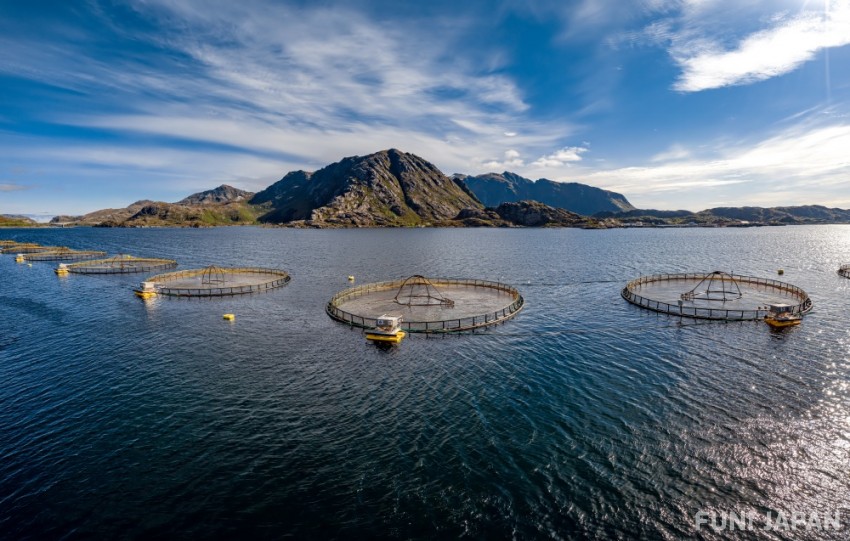
In Japan, salmon sushi is commonly found at supermarkets and conveyor belt sushi restaurants. Salmon is also a key ingredient in the globally popular California roll. So why is it that traditional or high-end sushi restaurants in Japan don’t serve salmon sushi?
Because eating raw salmon only became common after the 1990s
In Japan, varieties of salmon such as ginzake (coho salmon) and Atlantic salmon are classified either for raw consumption or for cooking. In fact, Japan didn’t traditionally have a culture of eating raw salmon for a long time.
However, starting around the 1990s, farm-raised Atlantic salmon and trout salmon from countries like Norway and Chile began to be distributed in Japan as safe for raw consumption. As a result, the culture of eating raw salmon—and the term “salmon” itself—gradually became more widespread.
The reason salmon sushi isn’t found on the menu at traditional or high-end sushi restaurants is because it’s a relatively new addition to Japanese food culture.
Are “Sake” (鮭) and “Salmon” the same thing?
By the way, is there any difference between sake (鮭), salmon, and masu (trout)? According to a post previously shared by Japan’s Ministry of Agriculture, Forestry and Fisheries (MAFF) on social media:
There is no difference in the names. Fish in the salmon family are classified into various species taxonomically, but over time, their Japanese names, English names, and product names have become mixed up. There is no clear distinction.
Incidentally, according to the website of Maruha Nichiro (a major seafood company), the salmon commonly used in Japanese conveyor belt sushi restaurants are mostly two types: farmed Atlantic salmon and trout salmon, which is rainbow trout raised in seawater.
Salmon Nigiri
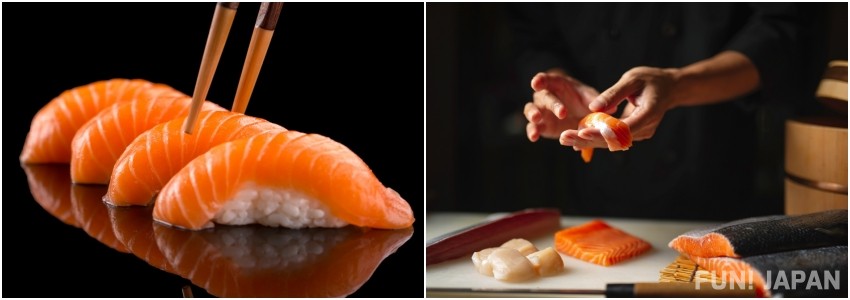
First is the basic nigiri sushi. The sweetness of the salmon fat combined with wasabi creates a distinct taste and is a reason for its popularity.
👉Reserve a table at Sushi Saitou (Tokyo) on Tabelog
👉Reserve a table at Sushi Arai (Tokyo) on Tabelog
Aburi Salmon Nigiri
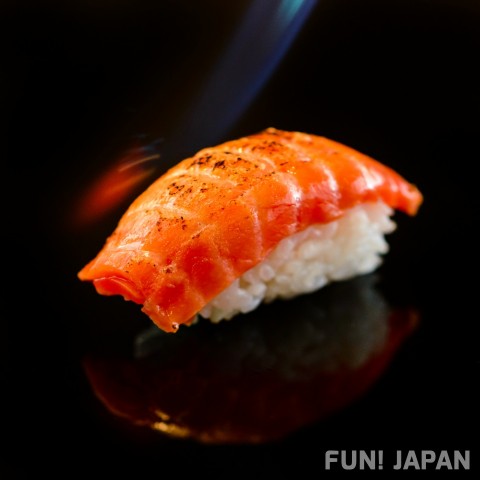
Aburi Salmon Nigiri is salmon nigiri that’s been seared on the surface. By searing, some of the wateriness is lost but the umami gets condensed. It also gives it some nice aroma.
Salmon Nigiri with Assorted Toppings
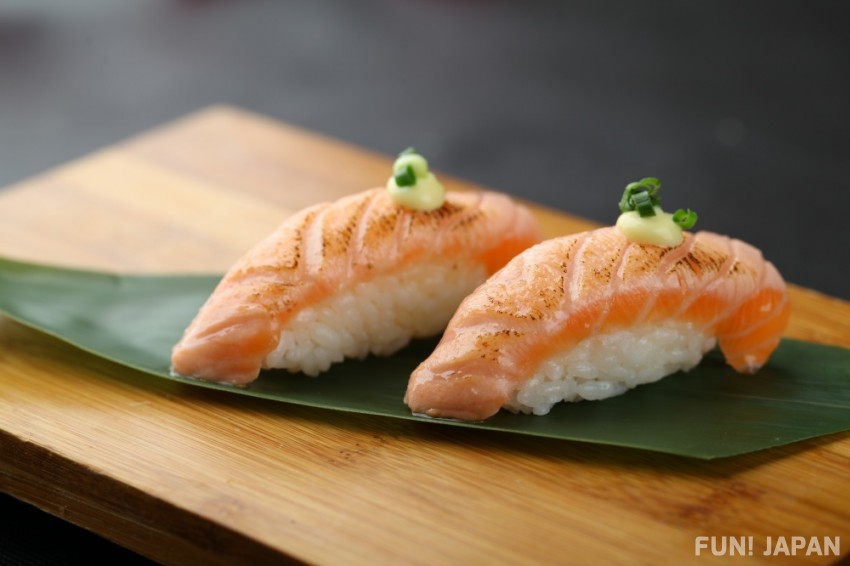
At some restaurants salmon nigiri is sometimes served with toppings on top of it, from mayonnaise to pickled plum. What is served varies with the restaurant, but usually it is usually a topping with a strong taste.
👉Reserve a table at Sushi Nakago Bettei (Osaka) on Tabelog
👉Reserve a table at Kyoto Sushi Matsumoto on Tabelog
👉Reserve a table at Sushi Matsui (Osaka) on Tabelog
Salmon Temaki Sushi
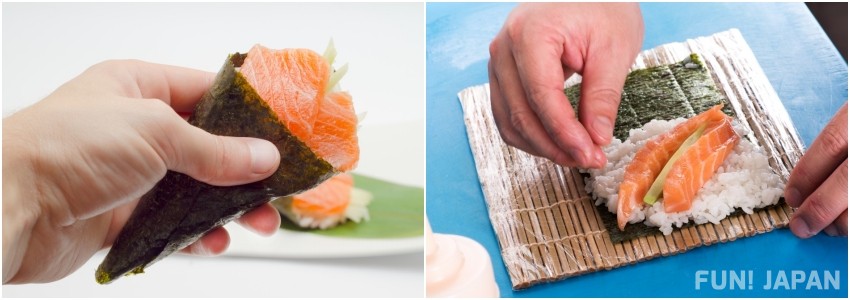
Salmon Temaki, or salmon hand rolls are another classic way to eat salmon sushi. Easy to eat without getting your hands messy, this style is popular with kids.
Salmon Maki Sushi
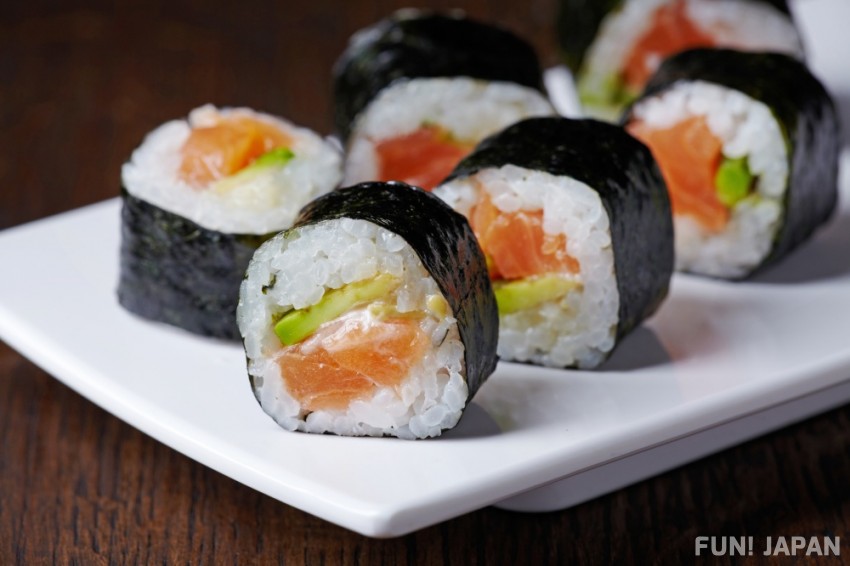
Classic salmon rolls. Salmon is bright in color, making salmon rolls a go to sushi roll for parties. Adding some greens like cucumbers and avocados help with making cleaner cuts.

The rolls are easy to make! Just spread some rice over nori and place your fillings. The white topping in the photo above is cream cheese. Various types of toppings make for good combinations, so try them out at home!
Salmon Hoso Maki Sushi
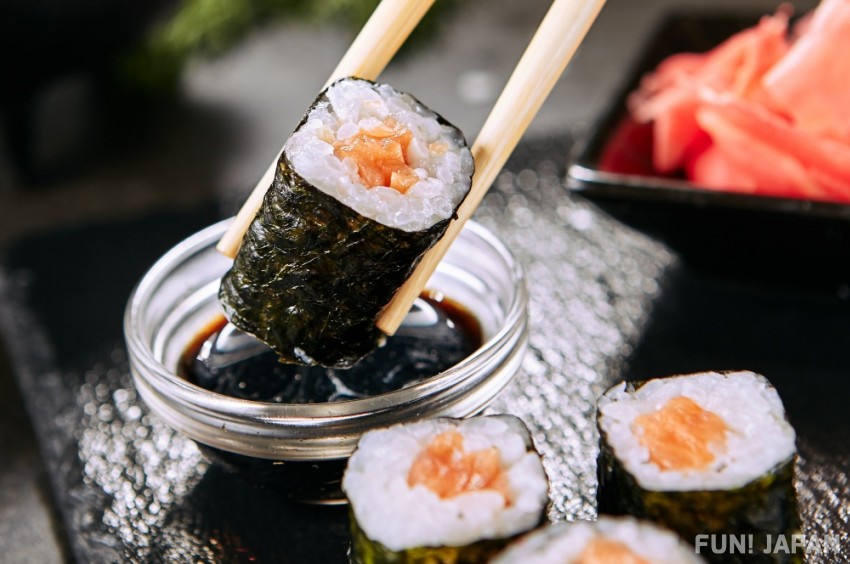
Similar to the rolls mentioned above, but salmon hosomaki’s only filling is the salmon itself.
Salmon Kazari Maki Sushi
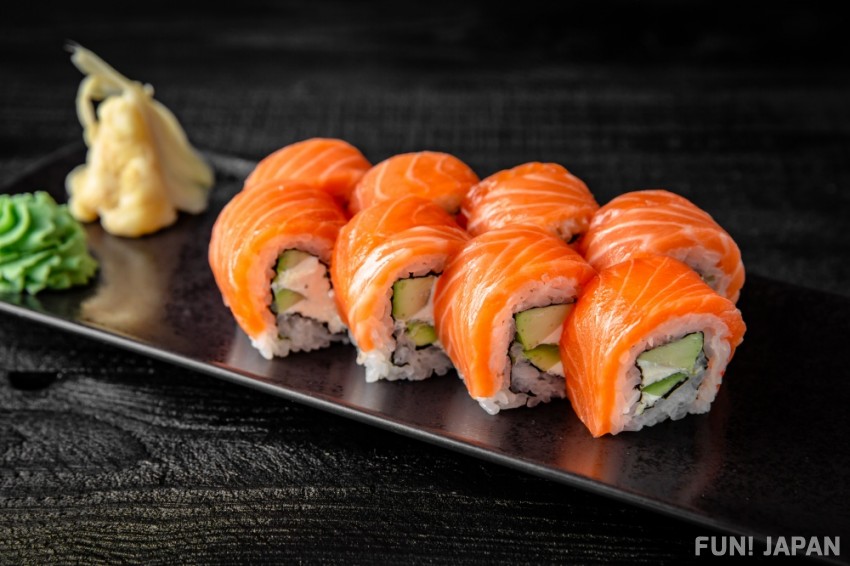
Regular sushi rolls are rolled with nori, but rolls like these have the fish wrapped over them. Kazari maki means “decorative rolls” and are great at parties.
👉Reserve a table at Daikanyama Sushi Sato (Tokyo) on Tabelog
👉Reserve a table at Kitahama Sushi Yamano (Osaka) on Tabelog
Salmon Oshizushi
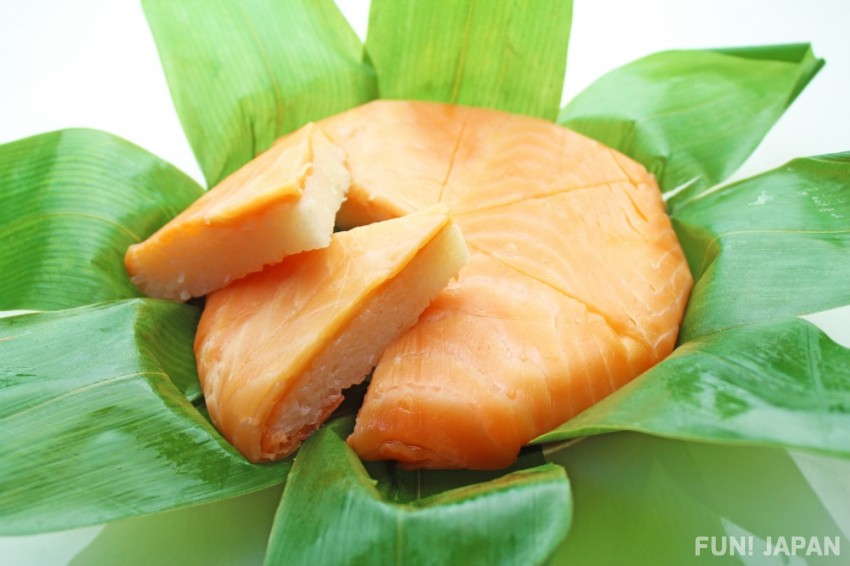
This sushi does not actually use salmon, but trout is used instead. It’s a local cuisine of Toyama Prefecture, and is sold as a type of train station bento, so visitors travelling in Japan may be familiar with this type of sushi. Vinegar rice is put into a mold, and with the trout on top, it is pressed down on. Oshizushi means “pressed sushi.”
Salmon Zuke Donburi
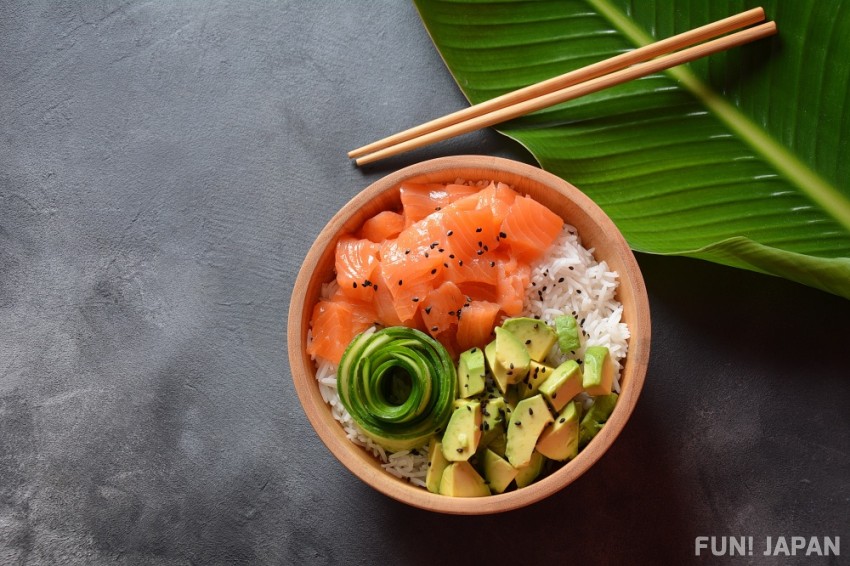
Salmon zuke is marinated salmon. “Donburi” is a dish where different ingredients and toppings are placed on top of white rice. Salmon zuke is marinated in soy sauce, sake, and sesame seed oil. This is then placed on white rice along with avocados and cucumbers.
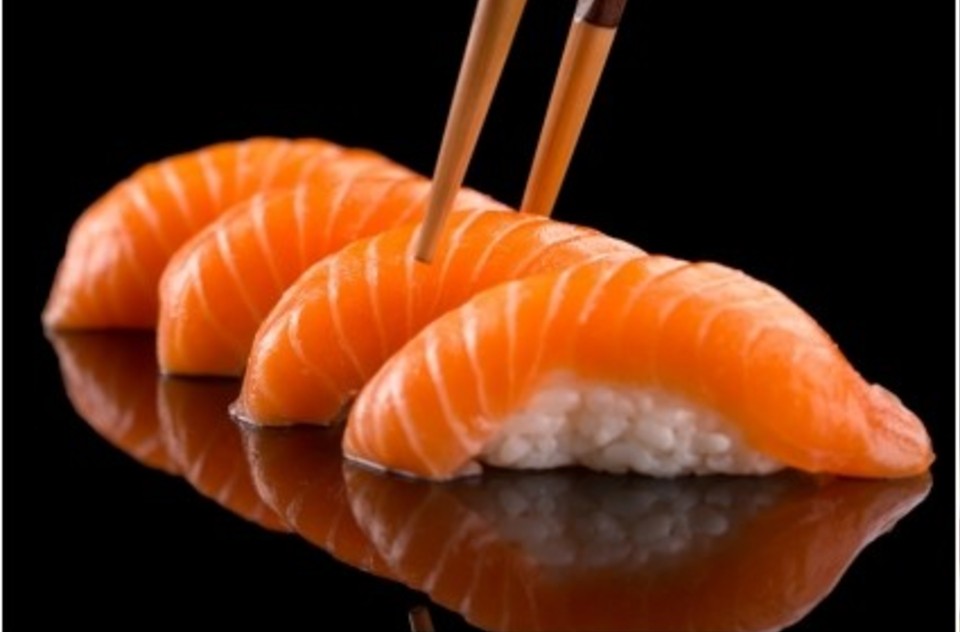
Comments